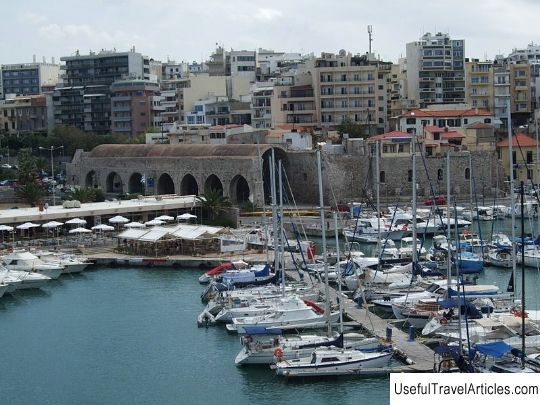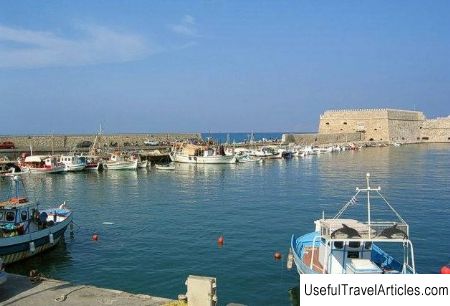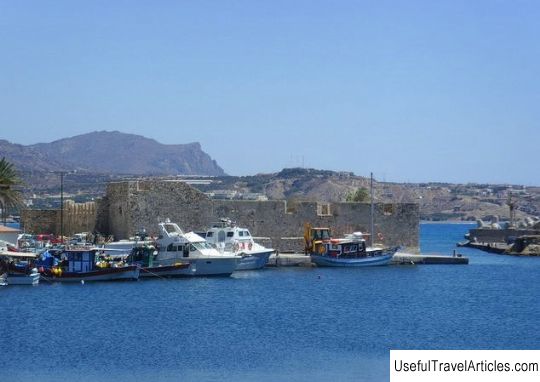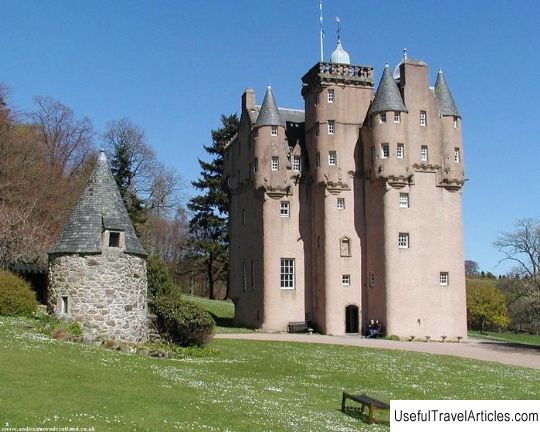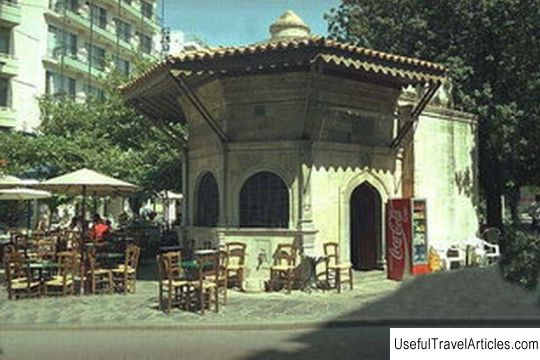Venetian Koules in Heraklion description and photos - Greece: Heraklion (Crete)
Rating: 8,1/10 (5404 votes) 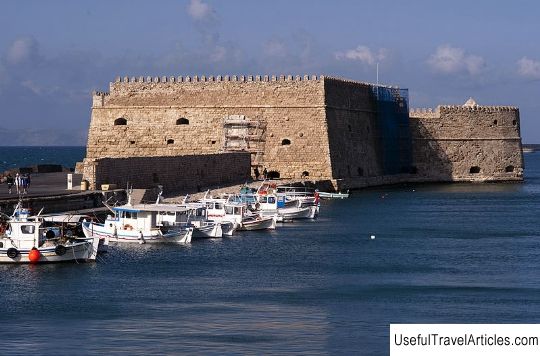
Venetian Koules in Heraklion description and photos - Greece: Heraklion (Crete). Detailed information about the attraction. Description, photographs and a map showing the nearest significant objects. The title in English is Venetian Koules in Heraklion. Photo and descriptionThe Venetian fortress of Koules dominates the entrance to the old harbor of Heraklion. The Venetians called it "Rocca al Mare" (Sea Fortress), but today it is known by its Turkish name "Kules" (su kulesi). This one of the city's most famous and beloved landmarks is its symbol. The exact history of the fortress's origins is unknown, but the harbor with such a strategic position in the Mediterranean could not remain undefended. The first fortress was most likely built on the site of Kulesa back in the Arab period (9-10 centuries). Some sources mention the fortress in the Byzantine period (10-13 centuries). There are also sketches of travelers of that time, the earliest of which are sketches of the fortress of the monk Buondelmonti (1429). In the middle of the 14th century, gunpowder (a mixture of saltpeter, sulfur and carbon) appeared in Europe. Its appearance played an important role in the war and radically changed military science. It became necessary to revise the defensive capacity of the previous fortifications. Thus, by the middle of the 15th century, the existing fortress was a weak and useless object for the defense of the city. In 1462, the Venetian Senate approved an ambitious program for the strengthening of Heraklion and the surrounding areas. Within the framework of this project, the old fortress of the harbor, which by that time was thoroughly damaged by earthquakes and the destructive force of the sea, was demolished (1523), and a new structure was built in its place, which has survived to this day. The work lasted until 1540. The fortress was built on a platform formed by natural rock ledges. The building has two floors with 26 rooms and covers an area of 3600 sq. M. The thickness of the outer walls is almost 9 meters, the inner walls in some places reach 3 meters. There were three entrances to the fortress from the western (main entrance), northern and southwestern sides. The outer walls were decorated with various plaques, inscriptions and coats of arms. The entrances were decorated with marble reliefs depicting the winged lion of St. Mark (the symbol of the Venetian Republic). Two of these reliefs have survived to this day. On the ground floor there was a prison and premises where food supplies and ammunition were stored. There were also separate quarters for soldiers, officers, and the governor. The fortress had a mill, ovens and a chapel, which ensured its autonomy. There was a lighthouse on the north side of the top floor. During Turkish rule, the upper level of the fortress was completed, embrasures, cannon spots and a small mosque were added. Today, the Kules fortress is sometimes used for art exhibitions that are held indoors on the ground floor. The top floor hosts concerts and shows, weather permitting.            We also recommend reading Rocca Strozzi castle description and photos - Italy: Campi Bisenzio Topic: Venetian Koules in Heraklion description and photos - Greece: Heraklion (Crete). |
